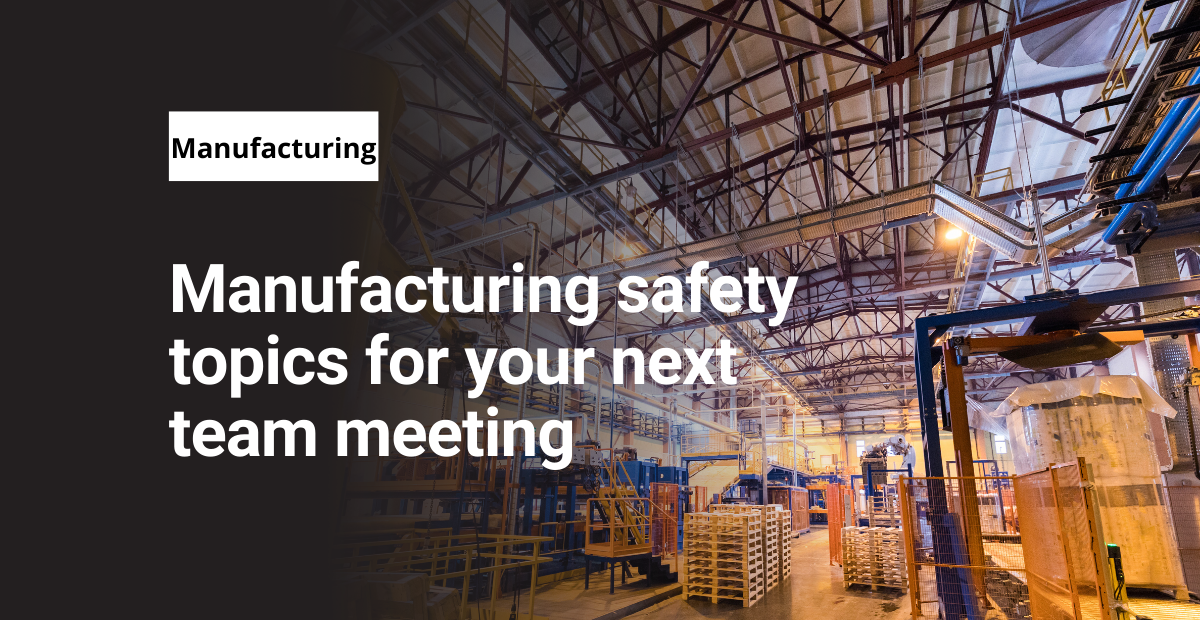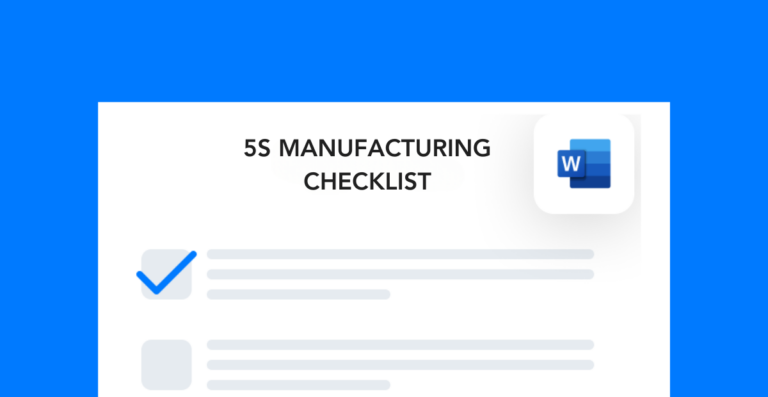During 2020, the manufacturing industry had 373,000 nonfatal work injuries, the second-highest number behind the healthcare sector. How do you combat this statistic? You do it through communication. There is no shortage of crucial manufacturing safety topics to discuss.
Therefore, you should hold regular safety meetings to educate both workers and managers on injury and illness prevention. In addition, use a variety of manufacturing safety topics to keep your meetings engaging and the content fresh.
Free checklist!
Use this checklist to conduct a 5S audit of your manufacturing facility and find opportunities related to manufacturing safety topics.
Manufacturing Process safety topics
In manufacturing, processes are often optimized for efficiency. However, without worker safety, true efficiency cannot exist. Your process should never sacrifice safety for speed, yet this sometimes occurs despite the best intentions.
Therefore, consider reviewing your procedures regularly to identify potential safety gaps and corrective actions. Here are several process-related safety topics to discuss during your next walk-through, GEMBA, or safety committee meeting:
- Workstation configuration
- Task expectations (speed) and how they relate to safety guidelines
- Work area 5S
- Lockout tagout
- Workflow ergonomics
- Proper supply of necessary materials and tools
c
Behavioral topics
When doing a safety walk, the easiest safety hazard to address on the spot is unsafe behaviors and habits. Behavior-based safety programs can have a major impact on site incident rates. If you’re noticing a lack of compliance with site safety rules, consider making this the topic of your next safety meeting to discuss important topics concerning manufacturing safety.
- Individual grooming standards
- Dress code enforcement
- Explaining behavioral safety hazards to your workforce
- Safe PIT driving guidelines
- PPE use
- Expressing empathy when correcting unsafe behaviors
Discuss behavior-based safety topics with floor managers and supervisors. Ultimately, they will have the biggest influence over workers. And if leaders know how to empathetically correct behaviors, your workers will be more willing to adopt long-term changes, enhancing safety in crucial manufacturing areas.
Equipment safety topics
After you buy and implement new equipment, it’s easy to leave oversight entirely to the maintenance team. However, everyone in the operation should remain alert for equipment-related hazards. These risks may arise from the condition of the machinery or from the absence of proper tools. Therefore, make sure to discuss and revisit these areas regularly to keep safety a top priority within your manufacturing safety topics:
- Cable management
- Disposal of retired/irreparable equipment
- Tagout process for broken equipment
- Management of equipment repairs
- PIT maintenance and management
- PPE access throughout the facility
- Storage of seasonal equipment and tools
Involve interested parties when discussing these topics. For example, if you want to discuss cable management, let members of the IT department join. They can expand on your knowledge of cable management solutions and may be able to help you solve a problem more effectively within the scope of manufacturing safety topics.
Building safety topics
If you think of safety only in terms of your manufacturing processes, inputs, and workers, you’re missing a large piece of the puzzle. Overall site safety helps drive the organizational culture to notice, report, and address hazards. Therefore, here are some building-related safety topics that you should make time to review, expanding on manufacturing safety matters.
- Trash and recycling management for fire and trip hazard prevention
- Parking lot etiquette
- Parking lot configuration (crosswalks, stop signs, etc.)
- Storage of materials
- Improvement of building 5S
- Sitewide cleanliness
- Facility walkways, stairs, and elevators/ladders
Looking at safety through a comprehensive lens helps reduce incident rates and creates a long-term positive impact on employee well-being. In particular, process, behavior, equipment, and building categories encompass most topics related to manufacturing safety. Consequently, the next time you struggle to choose a topic to focus on, refer to these four categories to identify new areas worth exploring.




